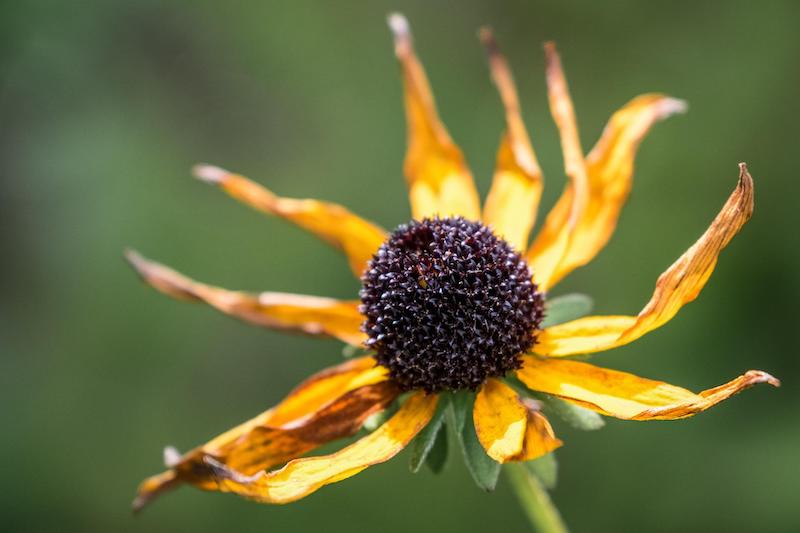Pruning Black-Eyed Susans helps to keep the plants producing more flower buds and cleans up any foliage that may be damaged by pests or disease. Deadheading has the dual purpose of encouraging more flowers to form and keeping Black-Eyed Susan from setting seed and spreading in unwanted areas. End-of-season clean-up is also an important maintenance task that helps herbaceous perennials to survive harsh winters in the coldest growing zones.

When to Prune Black-Eyed Susans
Herbaceous perennials go dormant to survive the winter months. Black-Eyed Susan foliage and flower stems will die back completely to the ground, starting in September in some parts of the country. Cutting back the spent growth will help to prevent any diseases from spreading or pests that may affect your plant. Mulching around the plant crown and root base will help to insulate Black-Eyed Susans through the winter.
Alternatively, the last set of flower stems can be left to set seed for the birds to eat over the winter. Late in the winter or early in spring, you can clean up the previous season's growth. Carefully cut off any dead parts to avoid damaging the new basal leaf growth.
Cutting back Black-Eyed Susans late in the spring, just as the first flush of flowers form, will result in many more flowers later in the summer and much bushier plants. Many herbaceous perennials can benefit from this early pinching back. Cut back the whole plant by about one-third, making sure to cut near a leaf or bud to hide unsightly bare stems. This early cutback will encourage sturdier stems that will not need staking or hoops to keep the flowers upright.

Why Prune Black-Eyed Susans
Black-Eyed Susans are a low-maintenance perennial with a naturally long blooming period. Annual maintenance involves regular deadheading and fall or early spring clean-up of spent plant material. Sometimes the weather is just right to encourage powdery mildew or rust on Black-Eyed Susans. Any affected parts of the plant should be removed quickly to prevent further spreading on the plant or to neighboring plants.
Lack of proper air circulation is one of the reasons that mildews and rusts attack. Do not be afraid to cut back excessive growth or to cut out damaged or dying foliage and flower stems after periods of high heat or drought. Removing the damaged material will encourage new growth to fill in.
How to Prune Black-Eyed Susans
Step 1 - Remove diseased stems
Make your cuts back to a main stem. This will help to stop the spread of diseases to the rest of the plant or neighboring plants.
Step 2 - Prune overgrowth
Keeping space around the stems will promote good air circulation.
Step 3 - Cut back in early summer
Cut back all stems by one-third. This will encourage a bushier plant and more flower stems.
Step 4 - Deadhead
Cut spent flower heads all of the way back to a main stem. Deadheading will encourage the plant to continue producing flower stems instead of putting energy into ripening seeds.
Step 5 - Spring clean-up
Prune all stems to a set of basal leaves by early spring. Spring clean-up makes room for the new growth to emerge.
Black-Eyed Susan Pruning Tips
- Deadhead regularly for a longer blooming season
- Do not be afraid to prune out branches that are diseased or dead any time during the growing season
- Cutting Black-Eyed Susans back in early summer by one-third will produce a bushier plant with more flowers
 |
Author Robbin Small - Published 7-31-2022 |
